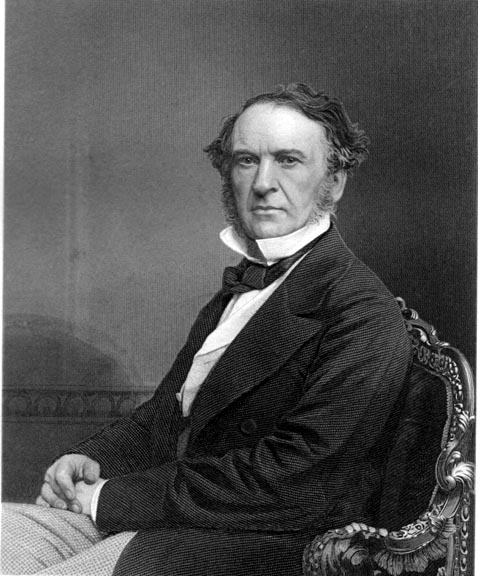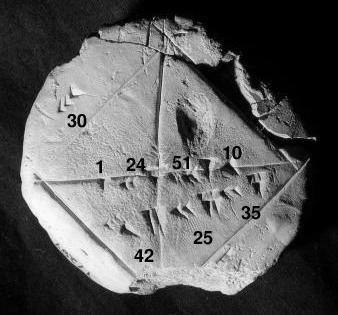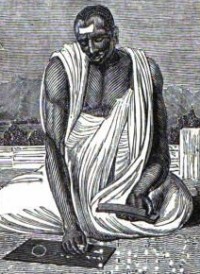As of right now, there are over 250,000 words in the Oxford English Dictionary. Some of them are new. Some of them are old. Some of them graced the front page of the New York Times once, gained entry by default, and were never used again. And yet, despite this seemingly endless supply of words, many people continue to fall back on the same handful of adjectives to describe their neighbor’s new puppy or their best friend’s wedding announcement. While I’d usually be the first person to point out the other 249,995 available terms, I can also understand the value of typically “overused” words.
1) Amazing
It’s been used to describe everything from talent show acts to Michelle Obama’s arms, but the word “amazing” has fallen out of popularity with some English geeks over the years. However, one writer from The Measure defends the term, claiming that it possesses the perfect balance of banality and enthusiasm. It’s the porridge of the adjective world, not too sophisticated but not too ordinary. Not to mention it’s steeped in history: it’s been used as far back as Shakespeare’s time. (Any word good enough for William is good enough for me. Yes, that includes swagger.)
2) Ridiculous
Ever since Darrell from Mad TV told a stranger that the back of her head was ridiculous, I’ve been hooked on this overused term. While yes, the popularity of this term has moved the definition away from “worthy of ridicule,” it shouldn’t be banished from the English language just yet, especially considering how useful it is for sarcastic remarks. “Go for a walk on this perfectly sunny day instead of binge-watch Orange is the New Black? That’s ridiculous.”
3) Awesome
Think about this for a second. If we eliminated “awesome” from the English language, we could not sing along to “Everything Is Awesome.” Anyone who disagrees has obviously not heard it.
4) Well
I use “well” so much, that I regress back to high school English editing habits whenever I finish a paper, peppering it carelessly throughout my paper and deleting them all at the end, along with all the “I think”s and “really”s and “I wish this assignment would wander into a sinkhole AND DISAPPEAR FOREVER”s.
5) Actually
As long as you’re not using it in a snarky way, “actually” is a fine word, and not just because it’s half of Love, Actually. Just be careful not to slip it into sentences where it doesn’t belong, like “Your show was actually pretty good!” or “Your baby is actually pretty cute!” It suggests that you didn’t expect whatever it was to be good going in, which could lead to some awkward conversations.
6) Thing
Okay, here’s the thing about “thing.” It’s a vague, overly general term, but it’s also the ultimate time-saver. I’m not advising you to slip it into your academic papers, but you don’t need to take the time to say “I was at a press conference event for that actor that was in The Big Bang Theory that one time, but he wasn’t like an original character or anything” if it’s not relevant to the rest of the story. It’s really okay to say thing. “I was at a thing.”
7) JustIn my opinion, “just is the less pretentious version of “simply.” “I simply can’t stand it!” (instead of “I just can’t stand it!”) automatically makes you sound like a wealthy housewife from the 1960s discussing the mischievous habits of your 16-year-old daughter who wants to listen to Elvis and attend a Civil Rights rally, among other ridiculous things. In my head, the woman is played by Maggie Smith, but feel free to choose some other actress.
8) Definitely
For me, “definitely” adds a personal touch to otherwise bland statements. “I’d like to go to that event,” for example, becomes much more enthusiastic when you add “definitely” into the mix. “I’d definitely like to go to that event.” But perhaps I’m biased. Most of my emails contain enough exclamation points to make people question my sanity, so my appreciation for enthusiasm might be a bit higher than normal.
9) Fail
Fail is really two words in one. You can have a regular fail (i.e. you get your coworker’s name wrong) or an epic fail (i.e. you get your coworker’s name wrong while introducing them at a company event celebrating their 50th anniversary at your company). Life is filled with both types, so it’s applicable enough to remain in my vocabulary.
10) Anyway
I mean, what else would you use as a transitory word? “And that’s how I domesticated a camel. Anyways, when do you want to get lunch?” “In other news” sounds too much like you’re about to start an evening broadcast and “moving on” sounds like you’re working your way through a class syllabus.
So remember: sometimes, the perfect word is the one that your English teacher hates. Just because you can describe your nephew as “winsome” and “jocular” doesn’t mean you should, so don’t be afraid to throw a few “nice”s out there if you need.
1) Amazing
It’s been used to describe everything from talent show acts to Michelle Obama’s arms, but the word “amazing” has fallen out of popularity with some English geeks over the years. However, one writer from The Measure defends the term, claiming that it possesses the perfect balance of banality and enthusiasm. It’s the porridge of the adjective world, not too sophisticated but not too ordinary. Not to mention it’s steeped in history: it’s been used as far back as Shakespeare’s time. (Any word good enough for William is good enough for me. Yes, that includes swagger.)
2) Ridiculous
Ever since Darrell from Mad TV told a stranger that the back of her head was ridiculous, I’ve been hooked on this overused term. While yes, the popularity of this term has moved the definition away from “worthy of ridicule,” it shouldn’t be banished from the English language just yet, especially considering how useful it is for sarcastic remarks. “Go for a walk on this perfectly sunny day instead of binge-watch Orange is the New Black? That’s ridiculous.”
3) Awesome
Think about this for a second. If we eliminated “awesome” from the English language, we could not sing along to “Everything Is Awesome.” Anyone who disagrees has obviously not heard it.
4) Well
I use “well” so much, that I regress back to high school English editing habits whenever I finish a paper, peppering it carelessly throughout my paper and deleting them all at the end, along with all the “I think”s and “really”s and “I wish this assignment would wander into a sinkhole AND DISAPPEAR FOREVER”s.
5) Actually
As long as you’re not using it in a snarky way, “actually” is a fine word, and not just because it’s half of Love, Actually. Just be careful not to slip it into sentences where it doesn’t belong, like “Your show was actually pretty good!” or “Your baby is actually pretty cute!” It suggests that you didn’t expect whatever it was to be good going in, which could lead to some awkward conversations.
6) Thing
Okay, here’s the thing about “thing.” It’s a vague, overly general term, but it’s also the ultimate time-saver. I’m not advising you to slip it into your academic papers, but you don’t need to take the time to say “I was at a press conference event for that actor that was in The Big Bang Theory that one time, but he wasn’t like an original character or anything” if it’s not relevant to the rest of the story. It’s really okay to say thing. “I was at a thing.”
7) JustIn my opinion, “just is the less pretentious version of “simply.” “I simply can’t stand it!” (instead of “I just can’t stand it!”) automatically makes you sound like a wealthy housewife from the 1960s discussing the mischievous habits of your 16-year-old daughter who wants to listen to Elvis and attend a Civil Rights rally, among other ridiculous things. In my head, the woman is played by Maggie Smith, but feel free to choose some other actress.
8) Definitely
For me, “definitely” adds a personal touch to otherwise bland statements. “I’d like to go to that event,” for example, becomes much more enthusiastic when you add “definitely” into the mix. “I’d definitely like to go to that event.” But perhaps I’m biased. Most of my emails contain enough exclamation points to make people question my sanity, so my appreciation for enthusiasm might be a bit higher than normal.
9) Fail
Fail is really two words in one. You can have a regular fail (i.e. you get your coworker’s name wrong) or an epic fail (i.e. you get your coworker’s name wrong while introducing them at a company event celebrating their 50th anniversary at your company). Life is filled with both types, so it’s applicable enough to remain in my vocabulary.
10) Anyway
I mean, what else would you use as a transitory word? “And that’s how I domesticated a camel. Anyways, when do you want to get lunch?” “In other news” sounds too much like you’re about to start an evening broadcast and “moving on” sounds like you’re working your way through a class syllabus.
So remember: sometimes, the perfect word is the one that your English teacher hates. Just because you can describe your nephew as “winsome” and “jocular” doesn’t mean you should, so don’t be afraid to throw a few “nice”s out there if you need.










